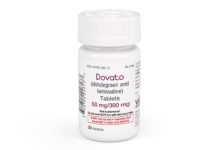Countries in Western and Southern Europe are well on their way to meeting the UNAIDS 90-90-90 targets, according to a study published in Clinical Infectious Diseases.
Using data collected to the end of 2013, a survey of eleven countries shows that an estimated 84% of people with HIV were diagnosed, with 84% of diagnosed people on antiretroviral therapy (ART) and 85% of these treated people virally suppressed. Two countries – Denmark and Sweden – had already achieved the 90-90-90 targets, with most other countries achieving at least one of these goals.
“The lowest proportions of diagnosed individuals on ART were estimated in Spain, Italy, Greece, and the United Kingdom,” comment the authors. “National treatment guidelines are likely to play a key role here. For example, in 2013, treatment guidelines in Greece, Spain, and the United Kingdom recommended ART initiation in patients with CD4 counts of < 350 cells/mm3. The proportion on ART is expected to improve once recent changes in guidelines are implemented.”
But the authors also noted that in many countries a significant proportion of people living with HIV still remain undiagnosed and therefore unable to benefit from HIV therapy. They call for more efforts to reach these undiagnosed individuals.
High levels of patient engagement in the HIV care continuum are key to the control of the global HIV epidemic. UNAIDS has set the target of ending AIDS by 2020. They estimate that this can be achieved if 90% of people living with HIV are diagnosed; if 90% of diagnosed people are taking ART; and if 90% of people taking ART are virally suppressed – the so-called 90-90-90 target.
Monitoring of progress towards achievement of these goals and comparison between countries is hampered by the non-standard collection of surveillance data. To try and overcome this, a team of investigators combined data collected from the European Centre for Disease Prevention and Control and European HIV national cohorts and surveillance agencies. They used these data to estimate the total number of people living with HIV and the proportion of these individuals who were diagnosed; the proportion of diagnosed people on ART; and the proportion of treated people who were virally suppressed (viral load below 200 copies/ml).
Eleven European Union countries were included in the study (Austria, Belgium, Denmark, France, Germany, Greece, Italy, the Netherlands, Spain, Sweden and the UK). Estimates were for late 2013.
Individual national estimates for the total number of people living with HIV ranged from 5500 in Denmark to 153,400 in France and 140,000 in Spain. Prevalence was lowest in Austria and Sweden (both 0.09%) and highest in Spain (0.36%).
The proportion of people living with HIV who were diagnosed ranged from a low of 78% in Greece to a high of 91% in Denmark, with Italy and Sweden also reaching the 90% target.
Of those diagnosed, the proportions on ART varied from 76% in Spain to 96% in Belgium. Five other countries – Austria, Denmark, France, the Netherlands and Sweden – had also attained the UNAIDS target of 90% of diagnosed on treatment.
In all eleven countries, at least 81% of ART-treated people were virally suppressed, with Denmark and Sweden already achieving the 90% goal.
Estimates for the UK were 81% of HIV-positive people diagnosed, 82% of diagnosed people on ART and 82% of treated people with viral suppression.
As a proportion of the entire population of people living with HIV, the percentage who were virally suppressed ranged from 52% in Greece and 54% in the United Kingdom to 80% in Denmark and 72% in Sweden.
Combined estimates for all eleven countries revealed that 674,500 people were living with HIV, an overall prevalence of 0.22%. An estimated 84% of these people were diagnosed, with 84% of diagnosed people on ART and 85% of treated people virally suppressed.
“The greatest drop between successive stages of the continuum was observed between the number of PLHIV [people living with HIV] and the number diagnosed, with 16% of undiagnosed individuals falling out of the continuum,” note the investigators.
“European countries are nearing the 90-90-90 target,” conclude the authors. “Reducing the proportion undiagnosed remains the greatest barrier to achieving this target, suggesting that further efforts are needed to improve HIV testing rates. Standardising methods to derive comparable continuums of care remains a challenge.”


 ПОИСК ПО САЙТУ
ПОИСК ПО САЙТУ  поиск по ресурсному центру
поиск по ресурсному центру 



